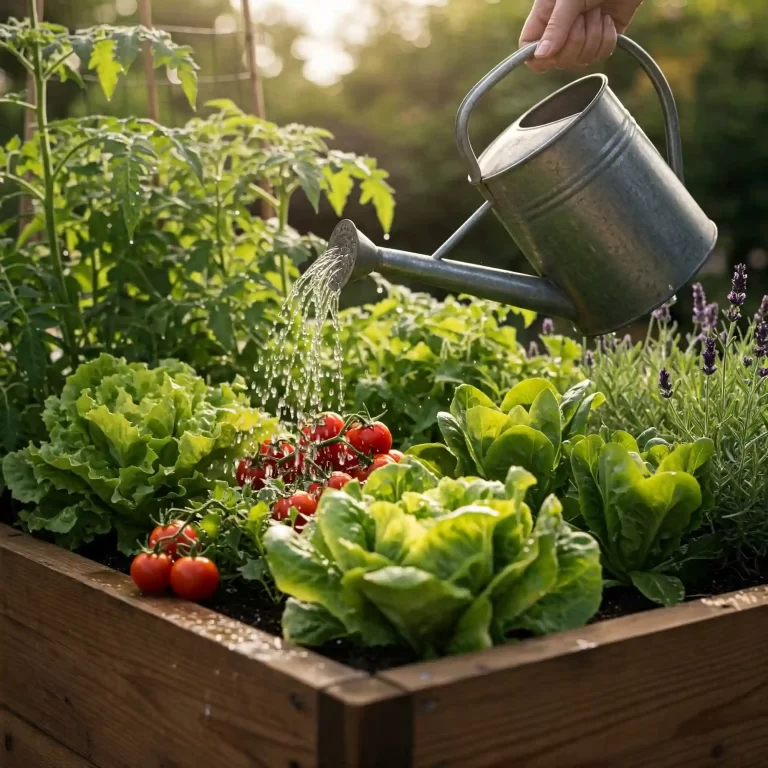Deciding Between Two Gardening Styles
Raised garden beds and in-ground gardens both have advantages and disadvantages, and the right choice for you will depend on many factors, including your gardening experience, physical abilities, space and budget. Here is a comparison between the two gardening styles.
Advantages of Raised Garden Beds:
1. Improved Soil Conditions:
Raised beds allow you to create a customized soil mix that suits your plants’ specific needs. You can add amendments such as compost, organic matter, and fertilizers to improve the soil’s drainage, aeration, and fertility.
2. Enhanced Accessibility:
Raised garden beds can be elevated to a comfortable height, making them easier to access for individuals with limited mobility or who have difficulty bending over. They also eliminate the need for tilling and weeding, reducing physical strain.
3. Better Control Over Watering:
Raised beds provide better control over watering, preventing over-watering or under-watering. The elevated design allows excess water to drain freely, reducing the risk of root rot and promoting healthy plant growth.
4. Reduced Weed Growth:
The raised bed structure and the use of weed barriers help reduce weed growth by preventing weed seeds from germinating and spreading. This makes maintenance easier, saves time, and improves overall garden hygiene.
5. Extended Growing Season:
With raised garden beds, you can extend the growing season in cooler climates. The raised soil warms up faster in the spring and holds heat better in the fall, allowing plants to thrive for a longer period.
6. Aesthetic Appeal:
Raised garden beds create a visually appealing and organized garden space. They can serve as decorative elements in your landscape and add a touch of beauty to your outdoor area.
Disadvantages of Raised Garden Beds:
1. Initial Investment:
Building or purchasing raised garden beds can involve an initial higher investment compared to in-ground gardens. However, the long-term benefits often outweigh the initial cost.
2. Limited Soil Volume:
Raised beds have a limited soil volume compared to in-ground gardens, which can restrict the growth of some plants that require more space to spread their roots.
3. Potential for Over-Watering:
If not managed properly, raised beds can be prone to over-watering, especially if the soil mix does not have good drainage. Excess water can lead to root rot and other plant problems.
4. Maintenance Requirements:
Raised garden beds require regular maintenance, including watering, fertilizing, and pest control. The elevated design may also make it more challenging to reach and maintain plants at the back of the bed.
5. Potential for Soil Compaction:
Over time, the soil in raised beds can become compacted, reducing root penetration and plant growth. Regular tilling or aeration is necessary to maintain a loose and healthy soil structure.
Advantages of In-Ground Gardens:
1. Natural Soil Environment:
In-ground gardens offer a more natural soil environment, allowing plants to access nutrients and moisture from the surrounding soil. This can lead to healthier and more vigorous growth.
2. Unlimited Soil Volume:
In-ground gardens provide unlimited soil volume, allowing plants to develop deep, extensive root systems. This is particularly beneficial for plants that require a lot of space to grow, such as certain vegetables and perennial plants.
3. Lower Maintenance:
Once established, in-ground gardens generally require less maintenance compared to raised garden beds. Soil preparation, watering, and fertilizing can be less frequent, saving time and effort.
4. Natural Weed Control:
In-ground gardens allow for the establishment of a diverse ecosystem, including beneficial insects and microorganisms that can help control weeds naturally. Companion planting and crop rotation can also be utilized to manage weed growth.
5. Cost-Effective:
In-ground gardens are generally more cost-effective than raised garden beds. You do not need to purchase materials or build structures, and the soil preparation and maintenance costs are typically lower.
Disadvantages of In-Ground Gardens:
1. Soil Preparation:
In-ground gardens require proper soil preparation before planting. You may need to till the soil, remove weeds, and amend the soil to improve its structure and fertility.
2. Weed Control:
Weed control can be more challenging in in-ground gardens, especially if you do not use weed barriers or practice regular weeding. Weeds can compete with your plants for water, nutrients, and sunlight, reducing their growth and yield.
3. Accessibility Issues:
In-ground gardens may present accessibility challenges for individuals with limited mobility or those who have difficulty bending over. Raised garden beds offer a more ergonomic solution for gardeners with these limitations.
4. Potential for Soil Compaction:
In-ground gardens can also experience soil compaction over time, especially if heavy foot traffic or machinery is used. Compacted soil restricts root growth and water infiltration, leading to plant stress.
5. Weather Conditions:
In-ground gardens are more susceptible to weather conditions such as heavy rainfall or drought. Poor drainage can lead to waterlogging, while prolonged dry spells can result in wilting and plant death.
Conclusion:
Ultimately, the choice between raised garden beds and in-ground gardens depends on your specific needs, preferences, and circumstances. Consider factors such as your gardening experience, physical abilities, available space, budget, and the types of plants you want to grow. Both gardening styles have their advantages and disadvantages, and the best choice will vary from one gardener to another.
